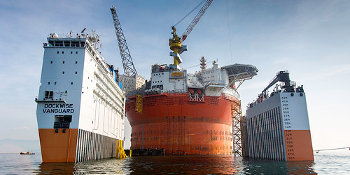
The analysis — from the Stockholm Environment Institute — comes as Norway concludes its September elections, which saw an intense debate over the country’s identity as a major oil exporter and the role of its petroleum tax policy. Norway has positioned itself as a leader on climate change, even as it issues a record number of new leases for offshore oil and gas production.
SEI researchers focused on two tax supports called fast depreciation and uplift. These measures lower risk for oil and gas companies, improve cash flows and profits, and boost investment.
Key findings from the analysis include:
“The Solberg government has pledged to continue or extend these tax breaks. Our analysis shows the climate consequences,” said Peter Erickson, an SEI senior scientist and lead author of the analysis. “If Norway wants to be a ‘low emissions society,’ it could consider whether there are adjustments to these measures, including removing them, that could start making the country’s oil production more consistent with the Paris Agreement.”
Norway has pledged to reduce its own emissions to 40 percent below 1990 levels by 2030 and to become a ‘low emission society’ by 2050. It has also committed to the Paris Agreement and its long-term target to stabalize warming at levels “well below” 2 degrees Celsius.
Statoil, the majority government-owned oil company, has argued that Norway should invest quickly before climate constraints become binding. But there are also risks that new fields do not hold the expected oil, or that doing so is much more expensive than expected; for example, a recent Statoil exploration failed to find oil in the highly touted Korpfjell field.
SEI’s analysis can help government leaders better evaluate the risks and rewards of supporting oil and gas production.
“Norway’s petroleum taxation system deserves a new look,” Erickson said. “Norway has the chance to use its partnership with the petroleum industry to prepare for a low-carbon future.”
Read the discussion brief on the analysis
For more information, please contact:
Peter Erickson – Senior Scientist, SEI’s U.S. Center
[email protected] +1 206 547-4000 x3#
Emily Yehle – Communications Officer, SEI’s U.S. Center
[email protected] +1 202 744-9055
Design and development by Soapbox.